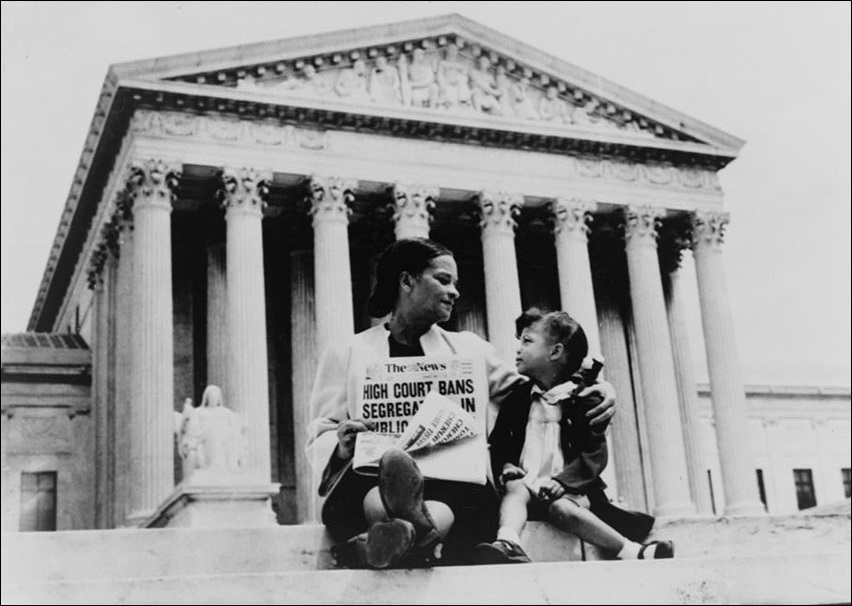Black History
Sixty-Six Years After Brown vs. the Board of Education

The anniversary of Brown versus the Board of Education is this weekend. It has been sixty-six years since the Supreme Court handed down its unanimous decision in Brown vs. Board of Education, declaring segregation in public educational facilities unconstitutional. The decision ended decades of federal support of the “separate but equal” doctrine which began in 1896 with Plessy vs. Ferguson.
Oliver Brown had filed suit after the Topeka Board of Education would not allow his daughter, Linda, to attend a white school that was near their home. Brown was one of the families in the area working with the NAACP to integrate schools. According to the Brown Foundation website, “each plaintiff was to watch the paper for enrollment dates and take their child to the school for white children that was nearest to their home. Once they attempted enrollment and were denied, they were to report back to the NAACP. This would provide the attorneys with the documentation needed to file a lawsuit against the Topeka School Board. The African American schools appeared equal in facilities and teacher salaries, but some programs were not offered, and some textbooks were not available. In addition, there were only four elementary schools for African American children as compared to eighteen for white children.”
The history of the historic Brown decision is preserved by, among others, the National Parks Service and the family. Cheryl Brown Henderson, the daughter of Oliver Brown, founded the Brown Foundation.
In 2014 when the decision turned 60, then-Attorney General Eric Holder said, “My generation…my generation…was the first to grow up in a world in which ‘separate but equal’ was no longer the law of the land. Even as a child growing up in New York City, I understand as I learned about the decision that its impact was truly groundbreaking.”
Thurgood Marshall, who became the first African American Supreme Court Justice, led the NAACP Legal Defense team during the Brown vs. Board of Education case. Chief Supreme Court Justice Earl Warren wrote the 1954 decision. One year later on May 31, 1955 during arguments to determine how states would implement the ruling, Warren urged states to start desegregation plans “with all deliberate speed.”

-

 Featured10 months ago
Featured10 months agoCalifornia Is the First State to Create A Public Alert for Missing Black Youth
-

 Featured9 months ago
Featured9 months agoAfrican American Leaders Stay the Course Amid Calls for President Biden To Bow Out of Race
-

 Featured10 months ago
Featured10 months agoThe Debate Fallout Lands on Both Candidates
-

 Featured9 months ago
Featured9 months agoPresident Joe Biden Decides to Withdraw from the Presidential Race
-

 Featured9 months ago
Featured9 months agoIn One of His Final Speeches as President, Biden Says It’s Time for ‘Fresh Voices’
-

 Featured9 months ago
Featured9 months agoPresident Joe Biden Describes Shooting of Donald Trump As ‘Sick’

